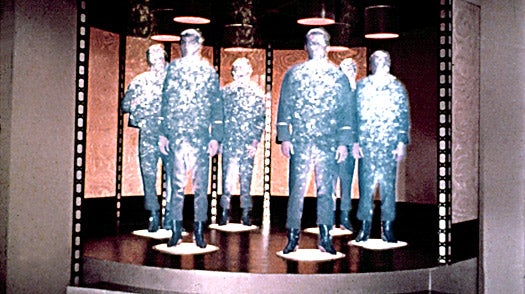Researchers Achieve Quantum Teleportation Over 10 Miles of Empty Space
Scientists in China have broken the record for quantum teleportation, achieving a distance of about 10 miles, according to a...

Scientists in China have broken the record for quantum teleportation, achieving a distance of about 10 miles, according to a new study in Nature Photonics. That’s a giant leap from previous achievements.
The feat brings us closer to communicating information without needing a traditional signal transmission, the researchers note.
Although it’s called teleportation, no matter is really moved. Rather, the quantum state of one object is transferred to another object.
It works by entangling two objects, like photons or ions. The first teleportation experiments involved beams of light. Once the objects are entangled, they’re connected by an invisible wave, like a thread or umbilical cord. That means when something is done to one object, it immediately happens to the other object, too. Einstein called this “spooky action at a distance.”
Until now, this has only been achieved with particles that are at most a couple hundred feet apart. And those distances have been accomplished with fiber channels, which help preserve the photons’ state.
In the latest experiment, researchers entangled two photons and zapped the higher-energy one through a special 10-mile-long free-space tunnel, instead of a fiber one. The distant photon was still able to respond to the changes in state of the photon left behind, an unprecedented achievement.
It worked because the team “maximally entangled” the photons, using spatial and polarization modes, according to Ars Technica. About 89 percent of the information was maintained, also an improvement over previous experiments.
The work was done at the Hefei National Laboratory for Physical Sciences at Microscale and the Department of Modern Physics, University of Science and Technology of China, Hefei.
Though a 10-mile teleportation is impressive, there’s still a long way to go before information can safely be sent this way. Photons are good at transmitting information, but ions are better at allowing manipulation, which would be necessary for encryption, Ars Technica notes.